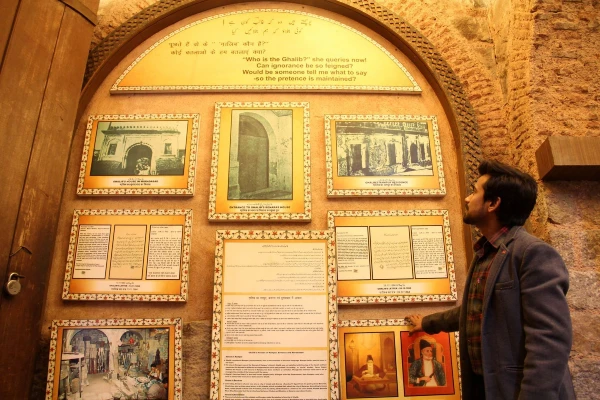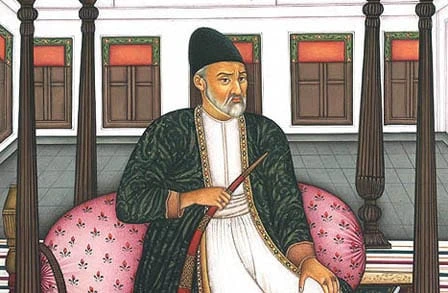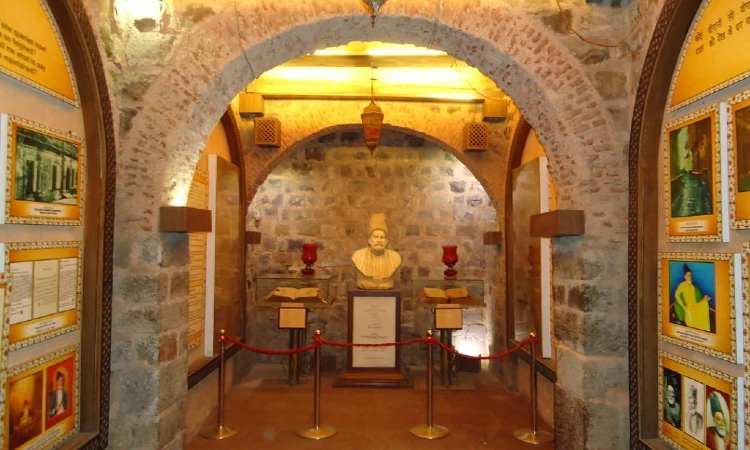|
Getting your Trinity Audio player ready...
|
“Ishq par zor nahin hai yeh woh aatish Ghalib,
Jo lagaye na lage aur bujhaye na bane…”
As I meandered through the narrow, vibrant lanes of Old Delhi, a haunting couplet by Mirza Ghalib floated through my thoughts like a familiar melody. Every step closer to the historic Ballimaran lane brought me deeper into a bygone world — a world where poetry was power, and words could shape hearts.
This was not an ordinary stop in my Delhi itinerary. For someone who finds magic in history and romance in ruins, Mirza Ghalib’s Haveli wasn’t just a destination; it was a soulful experience. A walk into the past. A visit to the home of India’s most beloved Urdu poet.
Finding the Haveli in the Heart of Old Delhi

Reaching Ghalib’s Haveli is an adventure in itself. The lanes of Ballimaran are a sensory overload — buzzing with cycle rickshaws, the aroma of kebabs and parathas, vibrant shops selling everything from jootis to attars. And right amidst all this chaos sits a quiet sentinel of time — Mirza Ghalib’s Haveli.
Hidden like a secret waiting to be uncovered, the haveli doesn’t boast grandeur or opulence. But the moment you see its sandstone archway and aged walls, something shifts. The noise of the city fades, and you’re instantly transported to the 19th century — to a time when this space echoed with verses, voices, and velvety ghazals.
Inside the Haveli: Where Poetry Still Lives
The haveli has been lovingly restored and now functions as a small museum dedicated to Ghalib. Though modest in size, the emotional gravity it holds is overwhelming.
As I entered the courtyard, I was welcomed by a statue of Ghalib, seated pensively, draped in traditional attire, his eyes lost in the world of words. The walls around me were adorned with framed verses, sketches, and historical artifacts from his life. Original manuscripts in flowing Urdu script. Letters he wrote. Photographs. Descriptions of his life, his work, and the world he inhabited.
The walls don’t just tell a story; they sing it. And if you stand quietly, you might hear echoes of the mushairas (poetry gatherings) that once filled this space.
Who Was Mirza Ghalib?

Born in 1797, Mirza Asadullah Baig Khan — known to the world as Ghalib — lived through the last days of the Mughal Empire and witnessed the First War of Independence in 1857. His poetry, written primarily in Persian and Urdu, explored themes of love, loss, philosophy, and existential introspection. He’s considered the father of modern Urdu poetry.
But beyond being a literary genius, Ghalib was also a complex man. He struggled with financial hardships, lost seven children in infancy, and battled with personal grief and existential questions. All of this seeped into his poetry, making it hauntingly relatable across time.
At this haveli, you don’t just learn about Ghalib the poet – you feel Ghalib the man.
The Emotional Weight of the Experience
As a traveler, I’ve visited many monuments. Grand forts. Majestic palaces. Towering temples. But there’s something different about visiting the intimate space of a poet. Here, grandeur is replaced with emotion. Instead of marble and gold, you’re surrounded by words that touch your soul.
I found myself pausing in front of a particular couplet etched on the wall:
“Dil-e-naadaan tujhe hua kya hai,
Aakhir is dard ki dawa kya hai…”
Translated: “Oh naïve heart, what has happened to you? What’s the cure for this ache?”
There’s a rawness in Ghalib’s words that transcends generations. Standing there, I wasn’t just a tourist — I was a witness to history, to heartbreak, to the beauty of expression.
A Haven of Stillness in the Chaos
Old Delhi can be overwhelming — it’s loud, fast, and endlessly energetic. But Ghalib’s Haveli is a sanctuary. A peaceful pause button in the middle of it all.
I sat on a bench for a while, letting the ambience soak in. A few other visitors, mostly locals and students, moved quietly through the space. Some took notes. Others stood silently. Everyone seemed moved in some way.
There’s no ticket counter, no crowd management, no commercial vibe. And perhaps that’s exactly what makes it so special. It’s not just a museum — it’s a memory preserved in brick and verse.
Tips for Visiting Mirza Ghalib’s Haveli
If you’re planning a visit to this poetic gem, here are a few quick tips:
How to Get There: Take the Metro to Chandni Chowk station. From there, either walk (about 15-20 minutes) or take a rickshaw to Ballimaran. Ask for “Ghalib ki Haveli,” and locals will guide you.
- Entry Fee: Free! But donations are welcome.
- Timings: Usually open from 10 AM to 5 PM. Closed on Mondays.
- Nearby Attractions: Don’t miss Jama Masjid, Red Fort, Chandni Chowk market, and Karim’s for a delicious Mughlai meal.
- Best Time to Visit: Mornings are ideal to avoid crowds and heat. The winter months, from October to March, provide the most pleasant weather for exploring the vibrant streets of Old Delhi.
Wrapping Up
As I left the haveli and stepped back into the whirlwind that is Old Delhi, I carried a sense of calm with me. Visiting Mirza Ghalib’s Haveli was more than ticking a box on my travel list — it was an emotional journey. A connection with a soul who, centuries ago, felt the same ache, the same wonder, the same questions that we do today.
If you’re someone who loves poetry, history, or simply the human experience, make time for this place. Because in a city racing toward the future, Ghalib’s Haveli stands still, cradling the past gently, whispering poetry into the present.
And maybe, just maybe, you’ll leave with your couplet echoing in your heart.

